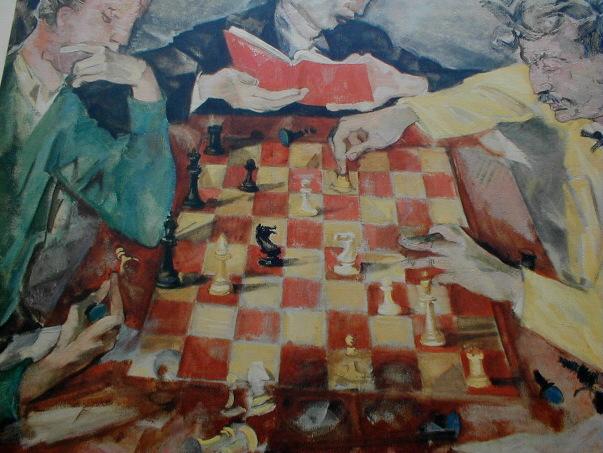C3 continued::Attack on the Castled King
The basic elements on the attack on the castled King (My notes from the Art of Attack in Chess)
Attack on the Castled King is the most important to study since they occur so frequently. The structure of the Castled King is positional in nature: a group of pieces having one or more fairly permanent features. One can further say it is passivity d stems from a certain immobility of the pieces. ( a finachettoed bishop may be an exception to this )
This passive nature derives from the lack of mobility of the king and is indirectly transferred to the pieces and pawns around it. Pawn weaken their position if they move and this weakness entails from reduced options from its advance. A pawn moved to h3 loses it's control over g3. Even pieces associated with a castle position lose some of their mobility functionality : A Knight on f6 needing to protect h7. or spatially due to difficulties involved in their centralization.
The structure and degree of weakness of the opponents castled position influences how the pieces attack it. Attacks range from lightning assaults to purely positional maneuvers, uncompromising charges to cautious preparations in which the attacker just flirts with the attack in order to restrict the opponents options.
Now here is an interesting point that had not occurred to me:
The positive feature of a castled position is that it is always a decentralized one. That as a rule any attack on it requires a greater or lesser decentralization of the attacker pieces. This is a basic contradiction for the main positional rule for normal play is one should be centralized (control the center), The risk of attacking the castled the king derives from if the attack stalls or fails then the attackers pieces are out of position which often leads to good counterplay for the defender.
Attack on the Castled King is the most important to study since they occur so frequently. The structure of the Castled King is positional in nature: a group of pieces having one or more fairly permanent features. One can further say it is passivity d stems from a certain immobility of the pieces. ( a finachettoed bishop may be an exception to this )
This passive nature derives from the lack of mobility of the king and is indirectly transferred to the pieces and pawns around it. Pawn weaken their position if they move and this weakness entails from reduced options from its advance. A pawn moved to h3 loses it's control over g3. Even pieces associated with a castle position lose some of their mobility functionality : A Knight on f6 needing to protect h7. or spatially due to difficulties involved in their centralization.
The structure and degree of weakness of the opponents castled position influences how the pieces attack it. Attacks range from lightning assaults to purely positional maneuvers, uncompromising charges to cautious preparations in which the attacker just flirts with the attack in order to restrict the opponents options.
Now here is an interesting point that had not occurred to me:
The positive feature of a castled position is that it is always a decentralized one. That as a rule any attack on it requires a greater or lesser decentralization of the attacker pieces. This is a basic contradiction for the main positional rule for normal play is one should be centralized (control the center), The risk of attacking the castled the king derives from if the attack stalls or fails then the attackers pieces are out of position which often leads to good counterplay for the defender.


0 Comments:
Post a Comment
<< Home